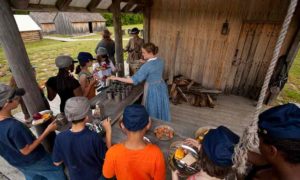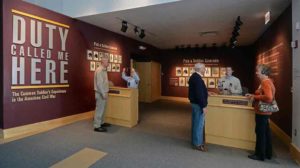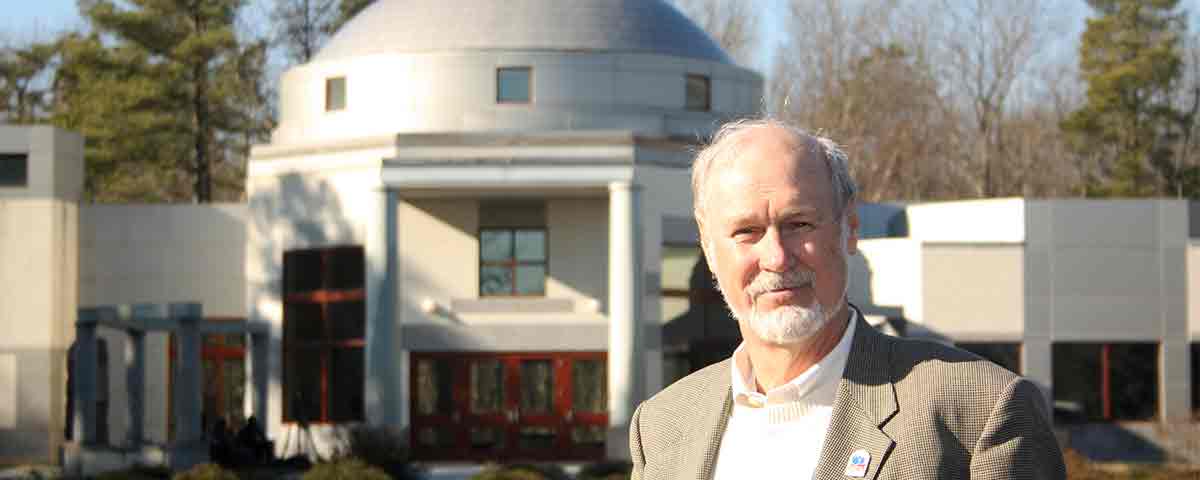About 4:30 a.m. on April 2, 1865, the Army of the Potomac’s 6th Corps breached the Confederate defenses near Petersburg, Va., ending a bloody 10-month stalemate. The Confederate capital of Richmond had to be evacuated the next day, and Robert E. Lee’s Army of Northern Virginia surrendered a week later at Appomattox Court House. The site is remembered as “The Breakthrough,” now a revered piece of Civil War ground within the 424-acre Pamplin Historical Park and The National Museum of the Civil War Soldier, about five miles from downtown Petersburg. For 22 years, A. Wilson Greene was executive director of this private, nonprofit facility comprising four museums, four historic structures, and three miles of interpretive trails. Greene, who retired in February, talked to ACW before he left.

[dropcap]1 [/dropcap]What makes Pamplin Park different from other Civil War sites?
It’s hard to place us in a neat descriptive box. First, we are a major Civil War museum. The National Museum of the Civil War Soldier is widely recognized as one of the nation’s best. Second, we are a house museum. We have four historic buildings on their original sites, including Tudor Hall Plantation, the home of the Boisseau family before and during the Civil War and the headquarters of Confederate General Samuel McGowan from October 1864 to March 1865. Third, we are a battlefield park. We preserve the site of the 6th Corps breakthrough—the engagement that ended the 292-day Petersburg Campaign, now a National Historic Landmark. And finally, we are a living history site. Costumed interpreters are stationed at Tudor Hall and at our re-created military encampment to explain civilian and soldier life during the Petersburg Campaign. The park is unique in its range of interpretive themes, which include life in the antebellum South and the impact of the Civil War on civilians; the story of the common soldier during the war; and the context, conduct, and consequences of the breakthrough.
[dropcap]2 [/dropcap]Of which of the park’s accomplishments are you most proud?
I am personally most gratified by the range of audiences that visit our site. Whether it be the tens of thousands of elementary school students who visit, the highly knowledgeable participants in our annual October symposium and tours, or those who just spot our sign on the interstate and drop in to see what we are all about. We designed the park’s facilities and programs to be relevant and accessible to as broad an audience as possible, and I think we have succeeded. I’m gratified that we rarely get accused of bias for or against the Union or the Confederacy.
[dropcap]3 [/dropcap]How has working at the park influenced your own Civil War research and writing?
Most historians like to write about events and places that are accessible to them. When we began to conceive Pamplin Park I realized that almost nothing had been written about the 6th Corps breakthrough—the centerpiece of the land we preserve. I began doing research simply to develop a body of knowledge to inform our site interpretation. That research expanded and resulted in my book, The Final Battles of the Petersburg Campaign: Breaking the Backbone of the Rebellion (University of Tennessee Press, 2008). My next project involved a history of wartime Petersburg, and now I am engaged in a multi-volume history of the entire Petersburg Campaign. My proximity to the landscapes involved in these topics and the repositories that contain so much of the data pertaining to Petersburg played a big role in my literary endeavors.

[dropcap]4 [/dropcap]Will the Civil War remain a part of your future endeavors?
I can’t imagine life without teaching and learning about the Civil War era. As long as the Good Lord sees fit to provide me with the physical and mental ability to contribute in some small way, I will write, speak, and lead tours of Civil War sites. I also hope to become a bit more active in promoting battlefield preservation, now that my focus is no longer exclusively on Pamplin Historical Park.
[dropcap]5 [/dropcap]What experiences can visitors expect to enjoy at Pamplin Historical Park?
Guests should come prepared to be actively engaged with the park’s resources. We put the visitor in charge of his or her experience by lending them an MP3 player that allows them to control the information they receive through their headsets. Within all of our four museums, visitors have the opportunity to use interactive exhibits, select videos, and even play computer games all designed to support the park’s historical themes.





